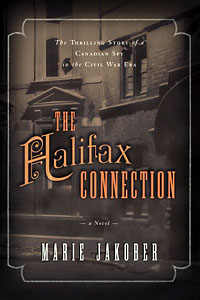![]() When I first encountered Tiddlyspot, the hosted version of Tiddlywiki (Wikipedia entry), the brilliant, javascripted-to-the-max, server-independent wiki written by Jeremy Rushton, I confess to not immediately seeing the need. I had about a dozen tiddlywikis applied to various writing and organizational projects, a number of which of which lived on a 1 G fire engine red Transcend JF110 alongside their own copies of Portable Firefox for both OSX and Windows. What I ran up against, though, was a concern about security, if I moved outside a restricted set of trusted computers (especially to university library systems). A USB stick seemed to me too good a vector (think phage), and since I haven’t done the poking-under-the-hood on Windows machines that I have on Macs, I wasn’t confident that I had the expertise to ensure I didn’t transmit anything unwanted on the Windows side. But I liked my portable wikis.
When I first encountered Tiddlyspot, the hosted version of Tiddlywiki (Wikipedia entry), the brilliant, javascripted-to-the-max, server-independent wiki written by Jeremy Rushton, I confess to not immediately seeing the need. I had about a dozen tiddlywikis applied to various writing and organizational projects, a number of which of which lived on a 1 G fire engine red Transcend JF110 alongside their own copies of Portable Firefox for both OSX and Windows. What I ran up against, though, was a concern about security, if I moved outside a restricted set of trusted computers (especially to university library systems). A USB stick seemed to me too good a vector (think phage), and since I haven’t done the poking-under-the-hood on Windows machines that I have on Macs, I wasn’t confident that I had the expertise to ensure I didn’t transmit anything unwanted on the Windows side. But I liked my portable wikis.
Hence the beauty of Tiddlyspot. It’s accessible from any computer-with-internet (and reasonably modern browser), without incurring the security risk of transferring a USB stick. The sign up is simplicity itself: username (which becomes the subdomain name) and password gets you a wiki. You have the option of a public or a private Tiddlywiki, via the control panel tucked behind it, password accessible. A handful of different flavours are available on sign-up, and once you understand Tiddlywiki styling, you can apply that understanding to Tiddlyspot to customize the look – with the caveat that you have to keep the content in the sidebar that allows you to upload and download. The standard set of Tiddlywiki plugins can be used to create tag clouds, most recent updates, splash pages, etc. Backup is a one click download of the whole file to your local hard drive – no XML or archives. You can take it off-line by downloading a local copy, working on it, and then uploading it later. Saving changes and uploading is password protected. I’ve had to email tech support once, and got a prompt and helpful response from Daniel Baird, author of the infernal Minesweeper plugin for Tiddlywiki. (Infernal as in addictive).
Limitations and unknowns: Tiddlyspot Tiddlywikis don’t seem to be terribly visible to Google (I tried an inurl:Tiddlyspot search, which missed most TS-TWs). Maybe this is because TWs tend to be internally linked rather than externally, but maybe Google doesn’t digest Javascript well; I want to look into this. I don’t know how big a TW can get before it breaks (though I haven’t broken one yet). A new dialect (well, different from Dokuwiki and Backpack) of markup has to be grasped. Plugins can slow down the loading (aww, but they are such fun!) There doesn’t seem to be a way to dump all content to a single flat file, though there’s a plugin that will create multiple hyperlinked static HTML files. TW in general is not meant for multiple users. When I started the Okal Rel Universe Concordance, with the intention of it being a multiuser wiki, I had to think through a protocol to prevent co-authors from clobbering each others’ edits. Only the last user is recorded as editor: there’s no edit history. I don’t know whether its security has yet been challenged by the scriptkiddies and wikispammers [1] (this is a downside??) – but note the ease of backup and reconstitution. ([1] Insert here obligatory plaint from senior netizen that this is not the web of yore).
The TS-TWs I have going so far are: the aforementioned ORU Concordance, the Women Scientists in Fiction page previously mentioned (still in early stages), a collection (still in its early stages) of Worldbuilding resources, and a couple that are currently private. On the USB stick, and possibly to move on line, I have repositories of medical and scientific scraps of information, a concordance around a series of linked novellas I am working on, and a scratchpad for another writing project. Other people have been far more inventive – see the Tiddler titled ‘Examples’ on www.tiddlywiki.com.
Additional links:
- Portable apps for Windows, for Portable Fireflox and a surprising number of others
- Portable apps for OSX
- My Tiddlywiki resources page on Backpack – since Google doesn’t seem to be great at indexing TWs, and most of the information and instructions for TWs are contained in TWs, I’ve realized I need to make an immediate note of where I find something – or I might never find it again. A while back I tore my hair out trying to find the plugin that would load the latest 5 tiddlers on opening.
 I have been doing some much-needed updating on
I have been doing some much-needed updating on